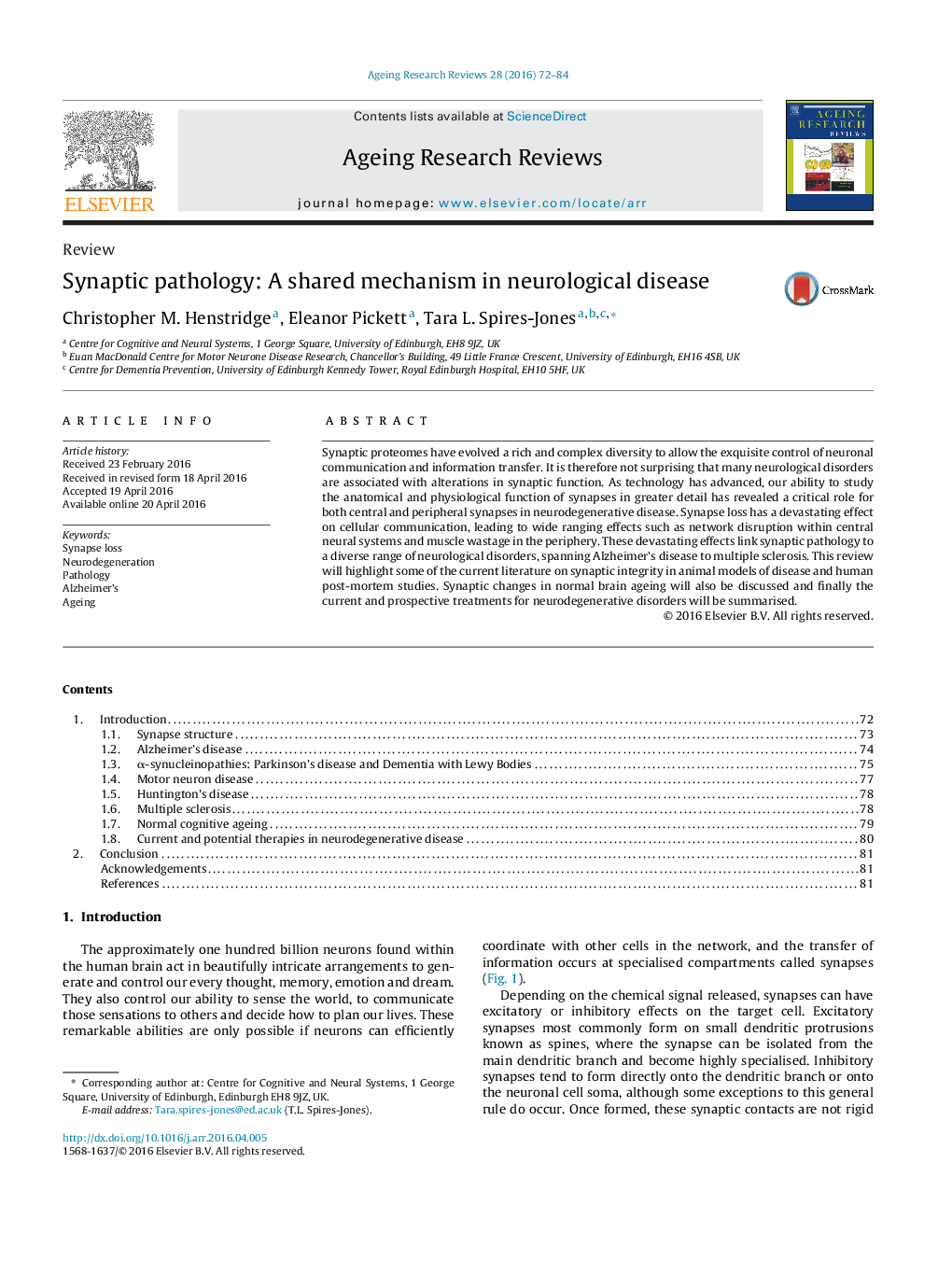| Article ID | Journal | Published Year | Pages | File Type |
|---|---|---|---|---|
| 1902167 | Ageing Research Reviews | 2016 | 13 Pages |
•Synaptic changes occur early in most neurodegenerative diseases.•Synaptic changes likely contribute to cognitive decline in ageing.•Targeting synaptic pathology is a promising therapeutic strategy.
Synaptic proteomes have evolved a rich and complex diversity to allow the exquisite control of neuronal communication and information transfer. It is therefore not surprising that many neurological disorders are associated with alterations in synaptic function. As technology has advanced, our ability to study the anatomical and physiological function of synapses in greater detail has revealed a critical role for both central and peripheral synapses in neurodegenerative disease. Synapse loss has a devastating effect on cellular communication, leading to wide ranging effects such as network disruption within central neural systems and muscle wastage in the periphery. These devastating effects link synaptic pathology to a diverse range of neurological disorders, spanning Alzheimer’s disease to multiple sclerosis. This review will highlight some of the current literature on synaptic integrity in animal models of disease and human post-mortem studies. Synaptic changes in normal brain ageing will also be discussed and finally the current and prospective treatments for neurodegenerative disorders will be summarised.
Graphical abstractFigure optionsDownload full-size imageDownload as PowerPoint slide
